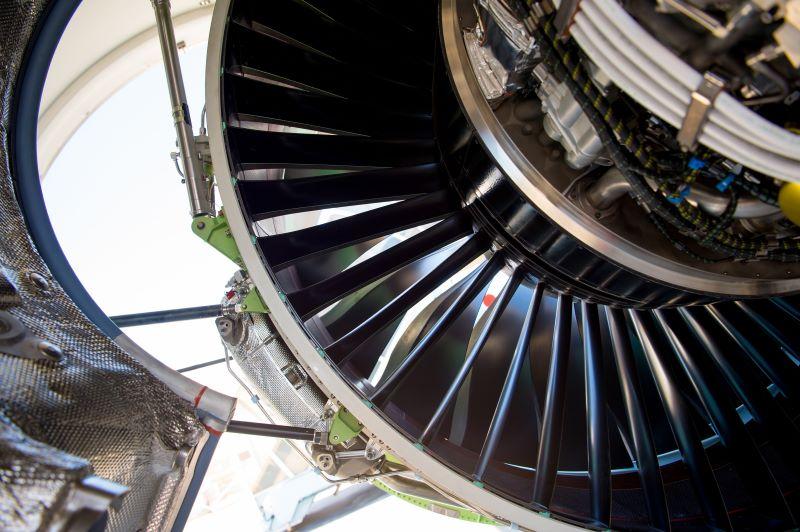
A new FAA draft rule would codify Pratt & Whitney’s recommended next steps for PW1100G engines affected by contaminated material, setting inspection intervals for more parts, adding new parts, and flagging engines the manufacturer believes have them installed.
The FAA notice of proposed rulemaking (NPRM), published Dec. 11, is based on two service bulletins developed by Pratt in recent weeks and issued Nov. 3. One bulletin flags the next batch of engines that need off-wing inspections of high-pressure turbine (HPT) stage 1 and stage 2 disks. The second formally adds high-pressure compressor (HPC) stage 7 and 8 integrated blade rotors (IBRs) to the Pratt’s “fleet management plan,” shortening their service lives.
Inspection intervals and revised IBR life limits differ based on engine thrust rating.
The updated service instructions also flag HPT stage 1 and 2 front air seals, rear air seals, and blade retaining plates for replacement during shop visits.
Aviation Week reported in October that the two bulletins would be released by year-end and would add the IBRs to the population of affected parts.
Pratt’s estimates show the next round of checks and part-removal instructions apply to 430 engines on U.S.-registered aircraft, the agency said. Within that population, Pratt’s calculations show that 366 will need new HPT 1st-stage hubs and 351 will need HPT 2nd-stage hubs.
Executives at Pratt parent RTX have said plans call for replacing affected parts as quickly as possible during shop visits, but it will not have enough new parts to cover the surge of engines that need checks in the coming months. The company indicated in October it does not expect to be producing enough parts to meet projected demand until sometime in the second quarter of 2024.
Pratt’s plan projects that as many as 700 PW1100Gs will need earlier than scheduled shop visits for checks that ensure parts made with contaminated powder metal (PM) are not cracking. Most of these checks, which must be done based on engine service life, are expected to take place before mid-2024. Another 500 scheduled checks also must be done. Affected engines have parts produced from late 2015 through early 2021 that have contaminated PM.
An initial round of checks mandated by FAA and other regulators in August affected about 140 engines globally—20 of them on U.S.-registered aircraft.
Pratt’s original plan to address contaminated PM risk required checks of affected parts—initially limited to HPT stage 1 and stage 2 disks—at every scheduled shop visit. But a December 2022 occurrence linked to a cracked IBR7 on a VivaAerobus Airbus A320neo prompted Pratt to reexamine its data and spotlighted additional PW1100G-series parts with the problem. It announced its revised fleet management plan in July.
The surge of unplanned inspections is clogging Pratt’s already strained overhaul network and forcing operators to park affected aircraft as turnaround times climb amid longer waits for slots and needed parts. Aviation Week Network Fleet Discovery database shows that 406 Pratt-powered A320neo-family aircraft are out of service, or about 28% of the fleet. While not all of them are affected by the PM inspection requirements, many are—and the total number of idled aircraft is growing. At the end of August—or just before the initial deadline for removing engines with contaminated PM parts, 175 Pratt-powered A320neos, or 13% of the total fleet, were on the ground, largely due to durability issues that have affected the fleet for years. Pratt projects the peak number of grounded aircraft will be 600-650, sometime around mid-2024.
The FAA proposal, which affects only PW1100G and PW1400G variants, would go into effect 35 days after a final rule’s publication. The agency is accepting public comments on the proposal through Jan. 11.





